Amazone ZA-TS spreader: complete, accurate, and pricey

German machinery manufacturer Amazone now offers its ZA-TS fertilizer spreader with a hopper capacity of 5,000 litres. The maximum load capacity is 4,500 kg, meaning the hopper can only be completely filled with fertilizers of low specific weight. The technology in this largest model is identical to that of the smaller ZA-TS variants.
That maximum load is somewhat like a maximum driving speed—more of a guideline than a constant. That’s why the ZA-TS 5000 comes with an acoustic warning system, which alerts the operator when the load exceeds the limit by 5% or more (from 4,725 kg upwards)..
In the Netherlands, the 5,000-litre version hasn’t yet hit the fields; the largest models in use here top out at 4,200 litres. The largest version is particularly suited for lighter fertilizers like urea, which has a specific weight of aroun
Tested model: 5,000-litre capacity, 2.85 m width
Our test model, the ZA-TS 5000 Ultra ProfisPro Hydro, is equipped with weighing cells, hydraulically driven spreading discs, and the AutoTS border spreading system. It’s easily hitched via a category III three-point linkage and has hydraulic hoses for the disc drive (a €4,750 option).
The spreader also features a double-acting valve for the hydraulic cover and the BorderTS border spreading deflector, both with a clear +/- position indicator. Plug connections for lighting and ISOBUS control are included as standard.
Accurate spreading with useful extras
We tested the 5,000-litre version with a working width of 2.85 metres. Including the improved front step, its width is 2.87 metres, and at the lighting level 2.97 metres. With foldable transport wheels, the height is 2.47 m (1.98 m without).
The massive 2.80 × 1.38 m hopper opening makes filling easy. Amazone uses a KTL dip primer and powder coating for corrosion resistance, backed by a 7-year anti-perforation warranty.
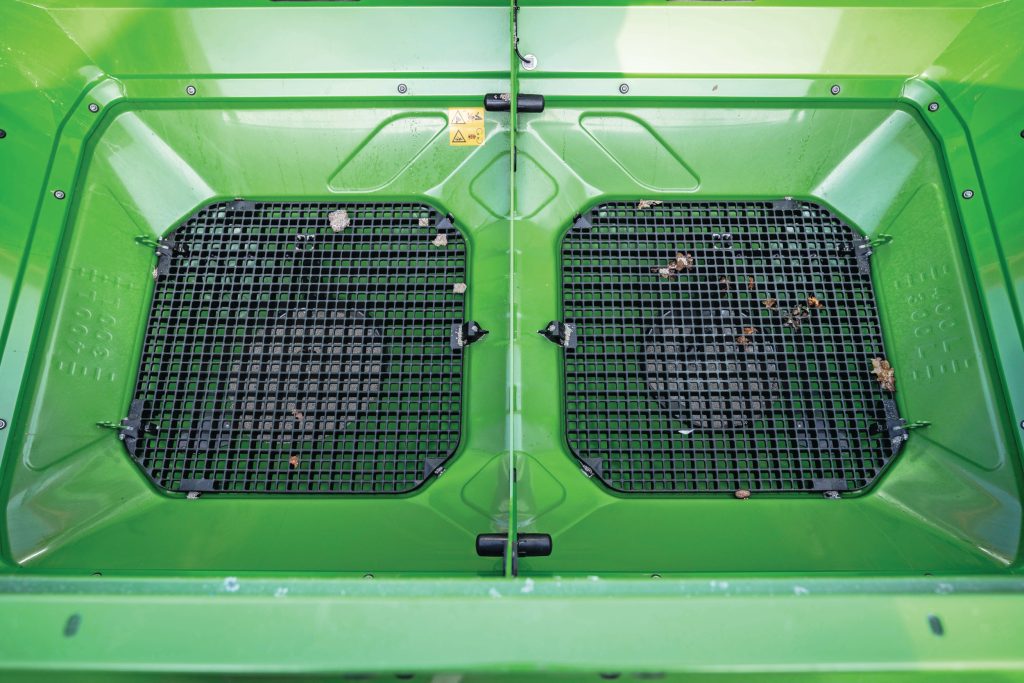
Refined spreading system
The stainless-steel spreading system features a hopper with an agitator, spindle motors for adjusting the outlet and drop point, and spreading discs with adjustable vanes. The border spreading setting is activated electronically. Agitators spin at up to 60 rpm and only operate when the outlets are open. A reverse function clears blockages.
Outlet geometry ensures consistent spread patterns even at higher application rates. Guide brushes next to the outlets help direct granules onto the spreading discs. A spindle motor adjusts the drop point depending on the fertilizer type. Spreader width is set by a combination of drop point, vane type, and disc speed—between 15 and 54 metres.
For varying working widths, you can easily swap the spreading vanes—much easier than changing the whole discs. Up to about 36 metres, the spreading patterns overlap twice, minimizing the impact of crosswinds or inconsistent fertiliser quality.
To check transverse distribution, we use EasyCheck plastic mats (€320). These are the digital successors to traditional tray testing. You place the mats across the working width, spread fertilizer, photograph them, and the app calculates optimal settings. Ours were always accurate—no adjustments needed after testing.
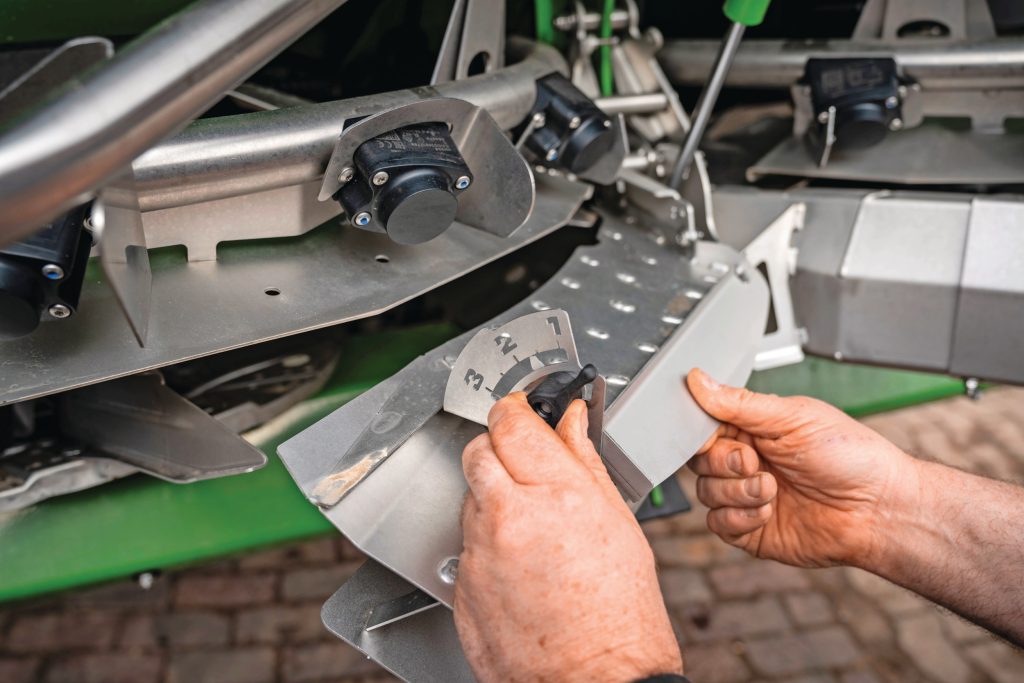
Very good border spreading
Amazone offers three variants (or actually settings) for border spreading with the AutoTS system. The manufacturer calls these field border spreading (result-oriented setting), border spreading and ditch spreading (both environment-oriented settings).
With field border spreading, you spread as optimally as possible up to the edge of the field, and some granules end up on an adjacent field. If there is no field there, but for example a road, cycle path or otherwise non-agricultural land, you use the settings for border spreading. In that case, no granules go beyond the field boundary, but fewer also fall towards the field edge.
Ditch spreading is, as it were, the superlative form of border spreading, where working width and dosage are further reduced. This is intended to keep fertilizer out of buffer zones and watercourses. Note: these three settings apply to border spreading towards the edge from the first tramline or spray track.
Border spreading
During border spreading, a spindle motor rotates the feed vane on the spreading disc about 10 degrees, so that the fertilizer is directed via the border spreading vane. You need to adjust these border spreading vanes, and thanks to the laser-etched scale, this can be done accurately and permanently.
Border spreading up to the field edge is done with a ZA-TS equipped with the optional BorderTS system, which costs €1,440. With this, you hydraulically swing a border spreading plate from above behind the left spreading disc. This plate ensures that the granules from the left disc are guided so that they fall right up to the edge of the field. The right spreading disc is not used in this process.
Then, using the AutoTS system from the first tramline, you ensure the correct overlap towards the edge with a reduced working width and half the dosage. In practice, this works really excellently. The nice thing is that the software automatically takes care of everything as soon as you lower the border spreading plate!
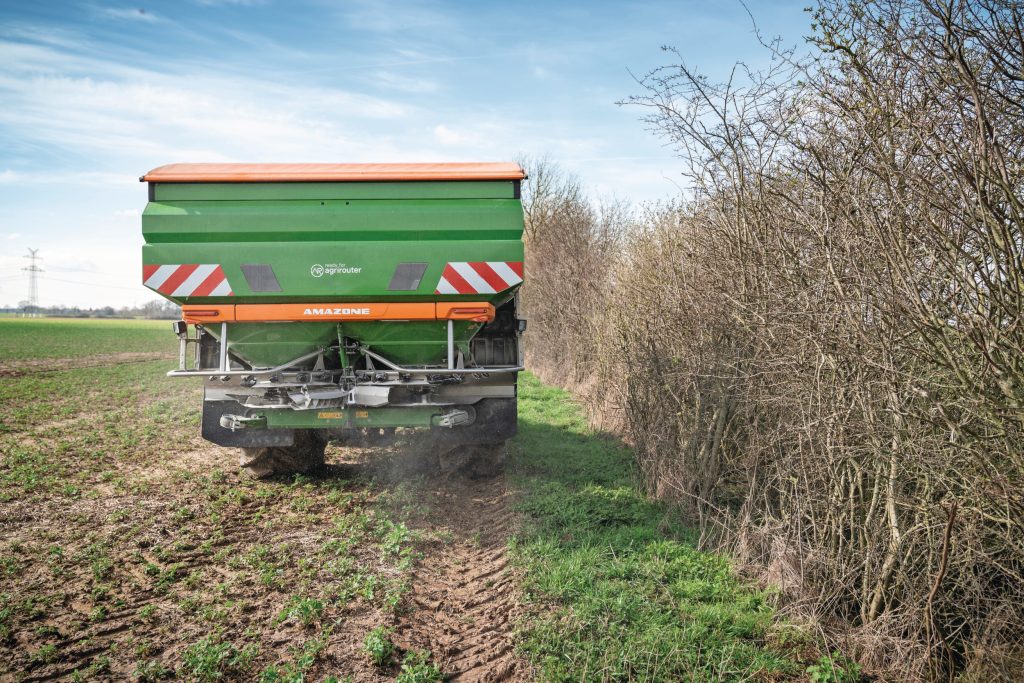
Flawless weighing and control
Weighing is standard (on Profis models), but FlowControl torque measurement (ProfisPro version) costs an additional €800. ProfisPro compares the set application rate with the actual application rate using the values from the weighing system and corrects the metering openings if necessary. An additional sensor corrects the measurements in situations where the spreader is not level.
FlowControl independently controls the metering openings based on the torque on the spreading discs. The system detects uneven fertilizer compositions, an empty hopper (side), and blockages, and then adjusts both metering openings accordingly. In our experience, FlowControl works accurately and flawlessly and truly adds value.
A clever and practical feature is the link between the weighing system and the LED work lights (surcharge of €655). An LED light starts flashing as you approach the desired filling quantity of the hopper. It lights up continuously once that quantity has been reached..
Many optional spreading pattern automation features
Amazone equipped the spreader for the implement test with the user-friendly AmaTron 4 Isobus terminal, including software activation for GPS Switch Pro and GPS Maps. This costs an additional €4,050. On the 8-inch diameter screen, you can see 128 sections switching automatically—something that is still problematic for many tractor terminals.
Via Wi-Fi, we connect a tablet to the terminal using the AmaTron Twin App (€450) for extra overview. The tablet then displays all GPS functions. We like this combination. Thanks to the far-reaching automation and the skills of the average Dutch driver, GPS-ScenarioControl (€200) won’t add much. It is intended as a record-and-playback function for less experienced drivers. Standard HeadlandControl, in turn, ensures that the working width is adjusted when leaving or approaching the headland. Just don’t forget to switch it off again.
During the test, we found out that for proper functioning, it’s best to first activate the steering system and then HeadlandControl. Otherwise, the Fendt 724 we use will drive into the wrong track from the headland.
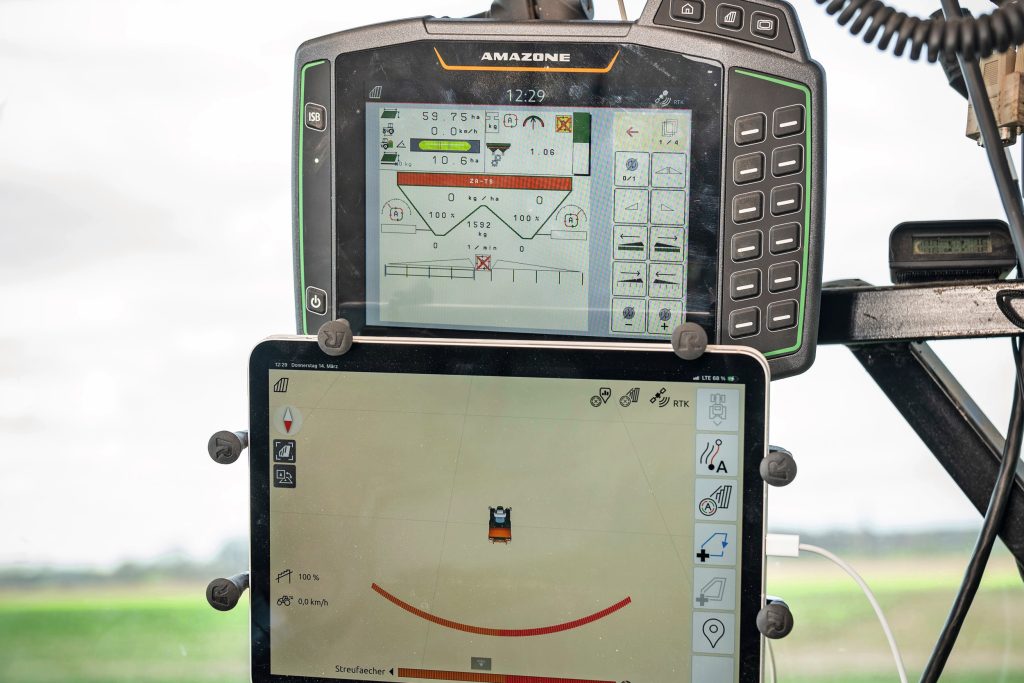
ArgusTwin system
Our test spreader is also equipped with the €7,300 ArgusTwin system. It scans the spreading pattern with fourteen radar sensors and automatically adjusts it when deviations are too large. The system is primarily intended for spreading less uniform and lower-quality fertilizers, and for situations with high relative humidity. If that’s not the case, we suggest you keep that €7,300 in your pocketn.
WindControl costs between €2,850 and €3,530 depending on the spreader model. It is always worth the required investment. A wind meter, which extends above the spreader and the tractor cabin, measures wind speed and direction. With that information, the software then adjusts the spreading pattern. Once again, a clever feature is the indicator with traffic light colors that shows whether further spreading is advisable based on the measured wind speed.
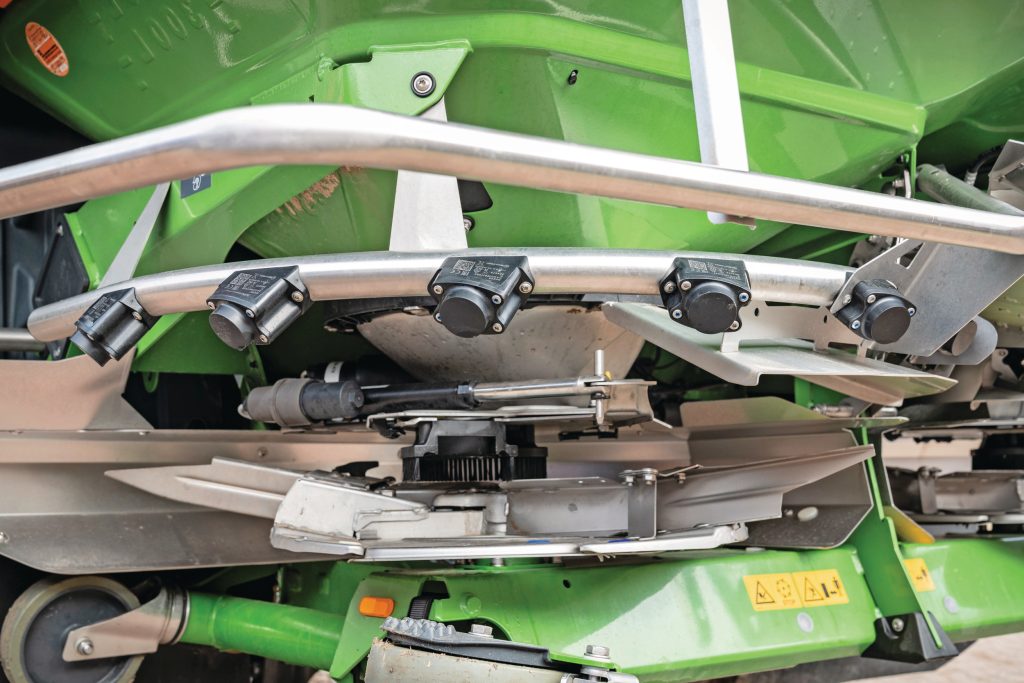
Filling discipline required
If you choose the largest version with a 5,000-liter hopper, some caution is required when filling. Filling with ammonium nitrate (KAN) gives a fill weight of 5.8 tons. That is more than allowed for the spreader, and often too much for the tractor.
Looking into the hopper from the (now) good steps, it is noticeable that the grilles are made of plastic. The good internal lighting is part of the LED light package. The hopper can be covered with a hydraulically operated roll-up cover. This requires a double-acting hydraulic valve instead of load sensing. According to Amazone, this provides more flexibility.
Setting the spreading rate is done with the mySpreader app. You enter the working width and driving speed, after which the app calculates all settings. You then manually transfer these settings into the terminal, or automatically via Bluetooth. The terminal’s user interface has been in use for some time, is getting old, and we think it could be revised. Nevertheless, its operation and intuitiveness are fine.
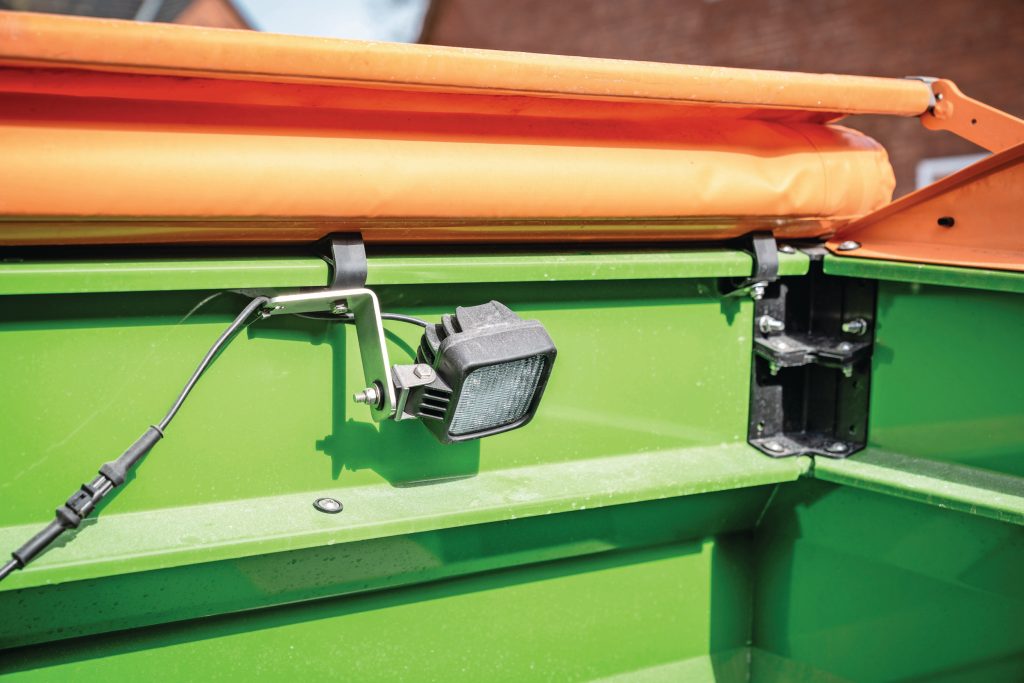
A fully equipped fertilizer spreader comes at a price
All in all, Amazone presents the ZA-TS 5000 Ultra ProfisPro Hydro as a (very) well-equipped fertilizer spreader, which, as tested, costs €47,140, a serious amount of money. If you also choose the AmaTron 4 Isobus terminal, an additional €4,050 is added.
Co authors: Luder Görtmüller, Christian Brüse


